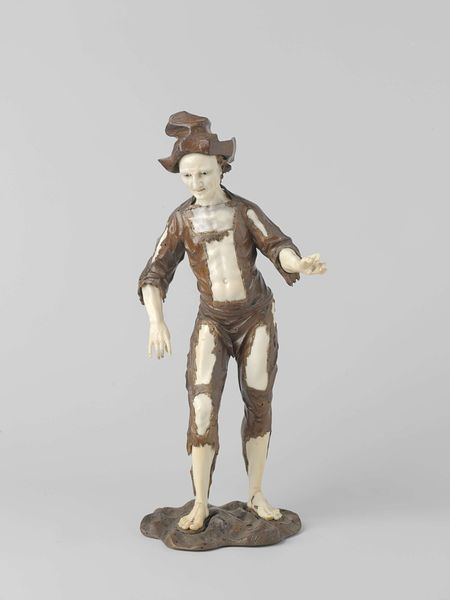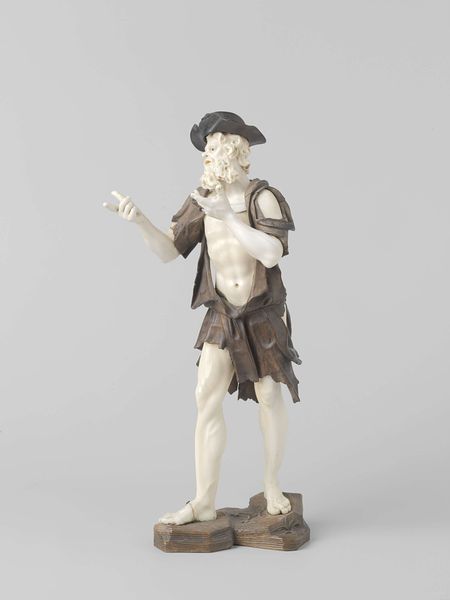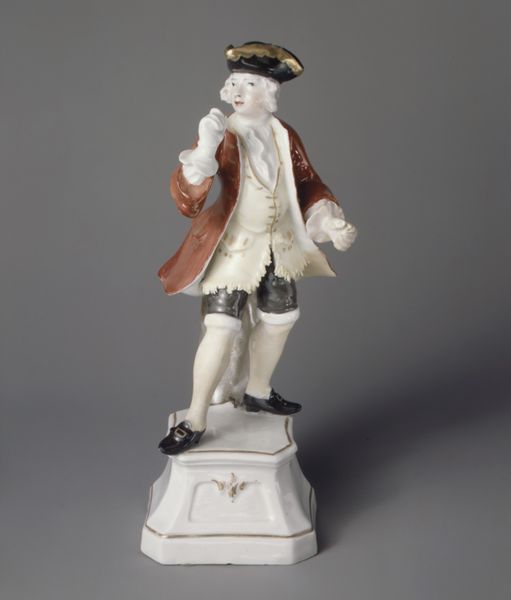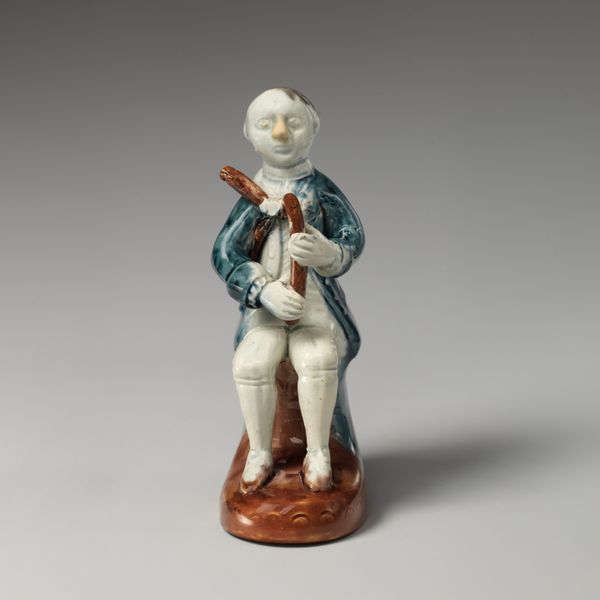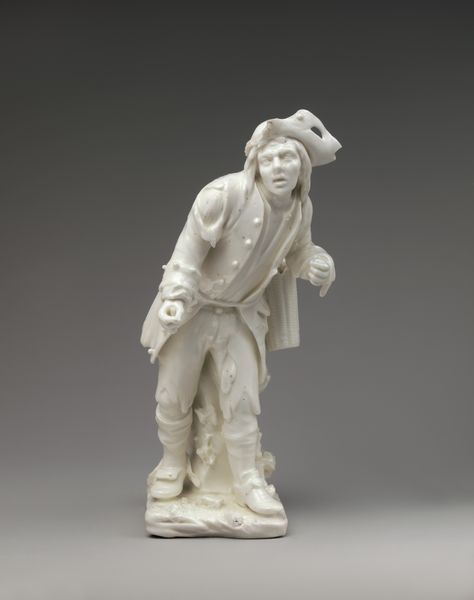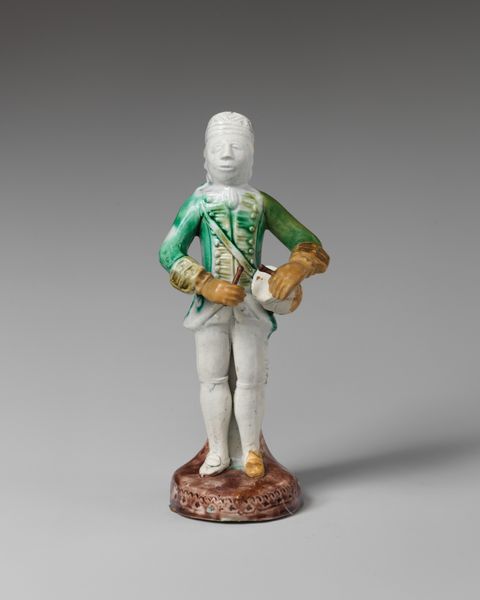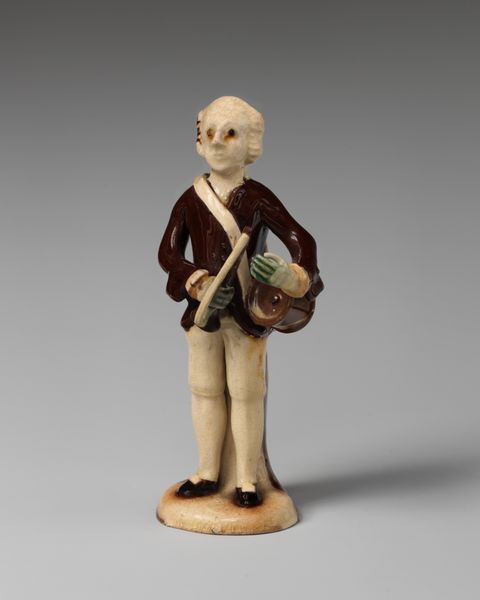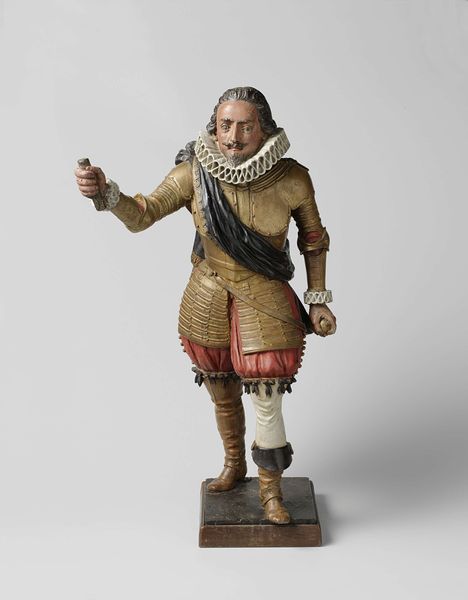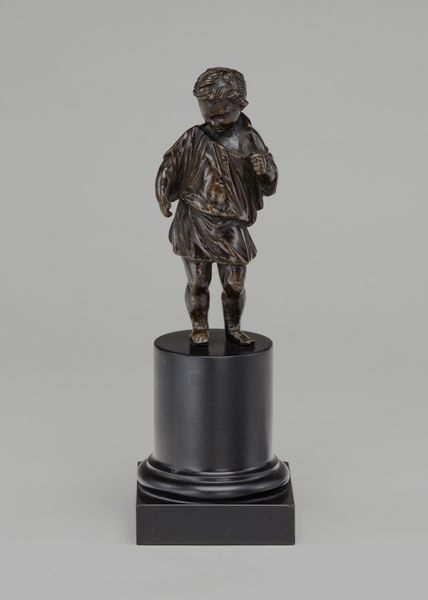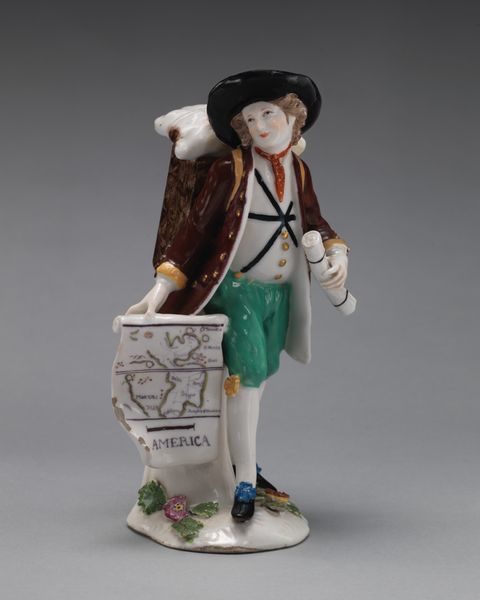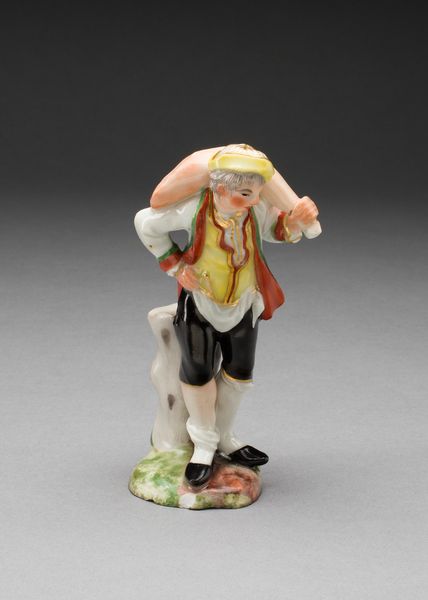
Dimensions: height 32 cm, width 13.5 cm
Copyright: Rijks Museum: Open Domain
Curator: Before you is a small wood carving by Simon Troger, known as "Begging Figure with Sack on His Back." It dates to before 1768. What’s your initial reaction? Editor: He looks forlorn, doesn't he? Kind of hangdog, caught between worlds. The contrast of the unpainted skin and worn brown clothes gives the impression that the body, as tired and worn as it is, endures nonetheless. Curator: Troger, active in Austria during the Baroque period, specialized in these kinds of genre scenes. The figure isn't a specific portrait, but a representation of a social type: the wandering beggar, common in that era. These figures were made in sets, often depicting professions or social classes. Editor: There's something touching in seeing such care devoted to depicting someone society often overlooks. The detail on the tattered clothing, the slump of the shoulders… He becomes more than just a "type." Is there some message the artist has in mind? Curator: Troger's work often reflects the socio-economic realities of his time, when inequality was rampant. By carving figures like this, he engages with the contemporary discussions about poverty, social justice, and the Church's role in helping those in need. It reminds people to be aware. Editor: So it is in the Baroque tradition to see the art reminding the patron class of its obligations. And yet it goes further than that for me: I see empathy here. I imagine the artisan crafting each cut and how intimate and familiar an image arises from the work that calls us, even now. Curator: His choice of medium is noteworthy, too. Wood was relatively accessible, enabling broader access to these works. Editor: Looking at the begging figure, I feel the weight of human history in him. Despite its modest size and everyday theme, he silently endures as art does. Curator: An insightful thought to conclude our conversation about Troger’s sculpture.
Comments
No comments
Be the first to comment and join the conversation on the ultimate creative platform.

